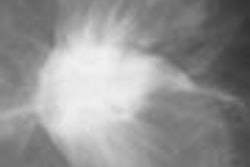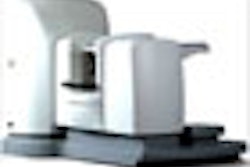CHICAGO - Breast MRI is a hot topic these days, and the topic has plenty of fodder: Researchers have been mining results published in the American College of Radiology Imaging Network (ACRIN) 6667 study of screening the contralateral breast in women with a recent diagnosis of breast cancer to address the question of MRI's place in breast cancer detection.
Using ACRIN 6667 data, Dr. Susan Weinstein, assistant professor of radiology at Penn Radiology at the Hospital of the University of Pennsylvania, and colleagues sought to determine the frequency of malignancy in probably benign lesions seen on MRI in high-risk patients. They presented their work to attendees at the 2007 RSNA meeting on Sunday.
Data from ACRIN 6667 was collected between April 2003 and June 2004; at enrollment, all the women who participated had negative clinical breast examinations and negative mammograms of the study breast. ACRIN radiologists used the American College of Radiology MRI Breast Imaging Reporting and Data System (BI-RADS) at image interpretation. Of the 969 women who made up the final study group, 106 of them were assigned an MRI-detected BI-RADS category 3 lesion, according to Weinstein.
"If a lesion fits the 'probably benign' characteristics, multiple studies have shown that there is a less than 2% risk of malignancy," Weinstein said. "The advantage of the BI-RAD 3 designation is that, if it's applied appropriately, the malignancy rate is low, which decreases the number of unnecessary biopsies, healthcare expenditures, and relieves patient anxiety."
Mean age of the study participants was 50 years, with a range of 28 to 80 years. Fifty-six were menopausal at the time of the study, seven perimenopausal, 24 postmenopausal, 18 surgically menopausal, and one woman's menopausal status was unknown.
Of the 106 BI-RADS category 3 lesions:
- 21 (19.8%) were masses
- 38 (35.8%) were areas of nonmass enhancement (NME)
- 30 (28.3%) were foci of enhancement (FE)
- 3 (2.8%) were masses with FE
- 6 (5.7%) were masses with NME
- 6 (5.7%) were FE with NME
Of the 106 patients, 83 had no evidence of malignancy in the study breast after two years of follow-up, while the remaining 23 had tissue diagnosis.
In all, only one case out of the 106 (0.9%) was diagnosed with malignancy among the cases assigned BI-RADS 3: results that match at least one other study by researchers at the University of California, Davis and the Fred Hutchinson Cancer Research Center in Seattle, that found that the incidence of breast cancer for women with a short-interval follow-up recommendation was 1.0% at two years after the baseline mammogram compared with breast cancer incidences of 0.6% and 0.5% for women whose baseline mammograms were described as "benign" and "negative," respectively.
Weinstein and her colleagues concluded that the malignancy rate diagnosed in MRI BI-RADS category 3 lesions was comparable to that seen in mammographic BI-RADS category 3 lesions.
"We found that (our study's) malignancy rate is in line with published mammographic BI-RADS category 3 figures," Weinstein said.
By Kate Madden Yee
AuntMinnie.com staff writer
November 25, 2007
Related Reading
Breast MR centers must look beyond imaging and offer universal care, November 2, 2007
MRI beats US for breast screening of at-risk women, but yields more biopsies, August 6, 2007
Breast MRI helps guide surgical treatment, May 22, 2007
MRI becoming more efficient in breast cancer detection, May 18, 2007
MRI useful for detecting cancer in contralateral breast, March 28, 2007
Copyright © 2007 AuntMinnie.com




















